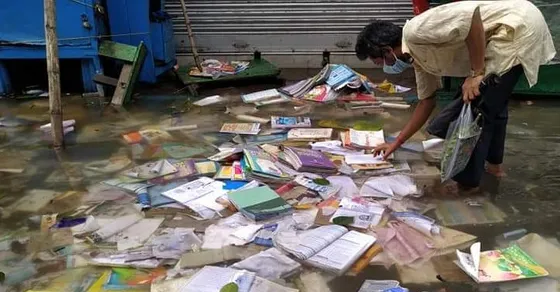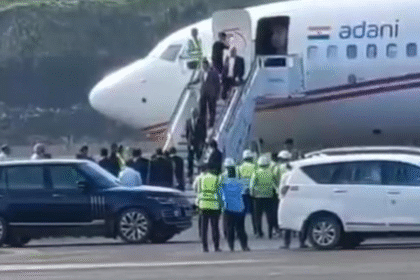College Street in Kolkata Flooded: Crores Worth of Books Ruined
Kolkata: Every year at this time, College Street bursts into life. The puja special editions of all popular publications bring a surge to the otherwise sluggish book market. Readers flock in to stock up before the holiday begins, and this extra footfall breathes oxygen into the boi para or literary neighbourhood. What can be sweeter than good sales before a festive break?
But today, College Street is grim. The downpour of September 23 that killed 10 flooded Kolkata. College Street, where books often line the sidewalks, was also inundated.
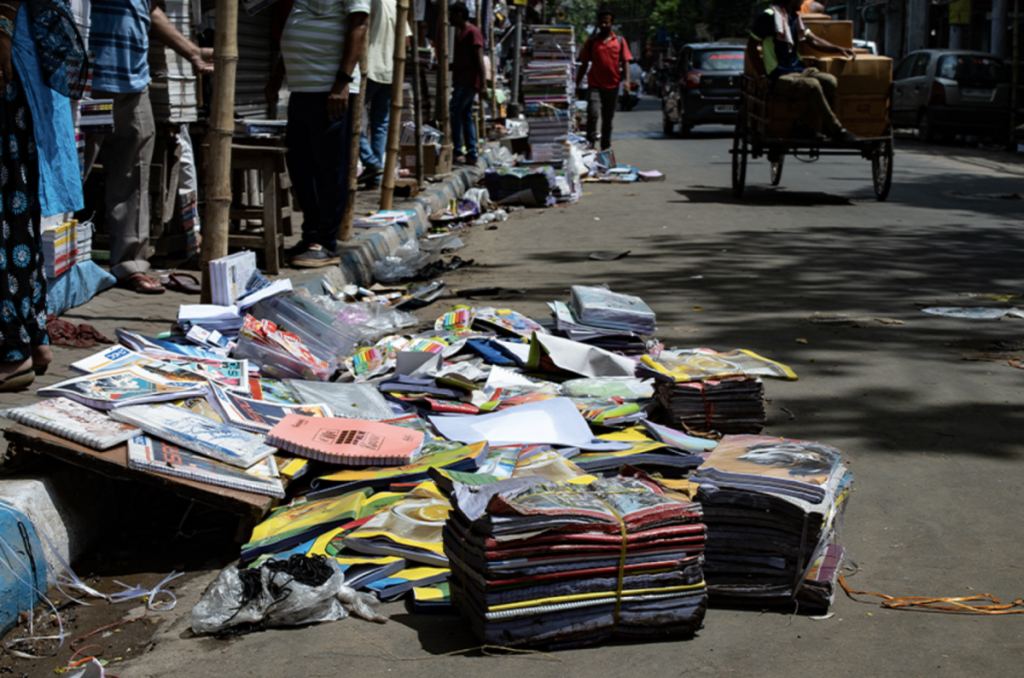
Puja specials, freshly printed books, and old stocks now contribute to a swamp. The water stood for over 24 hours. According to municipal records, the average rainfall was 252.4 millimetres. Areas like Maniktala, Thanthania, and College Street in north Kolkata, which flood at the slightest drizzle, were hit hard by this sudden deluge and there was waist-deep water in places. As a result, the booksellers and publishers of College Street are, in a word, ruined.
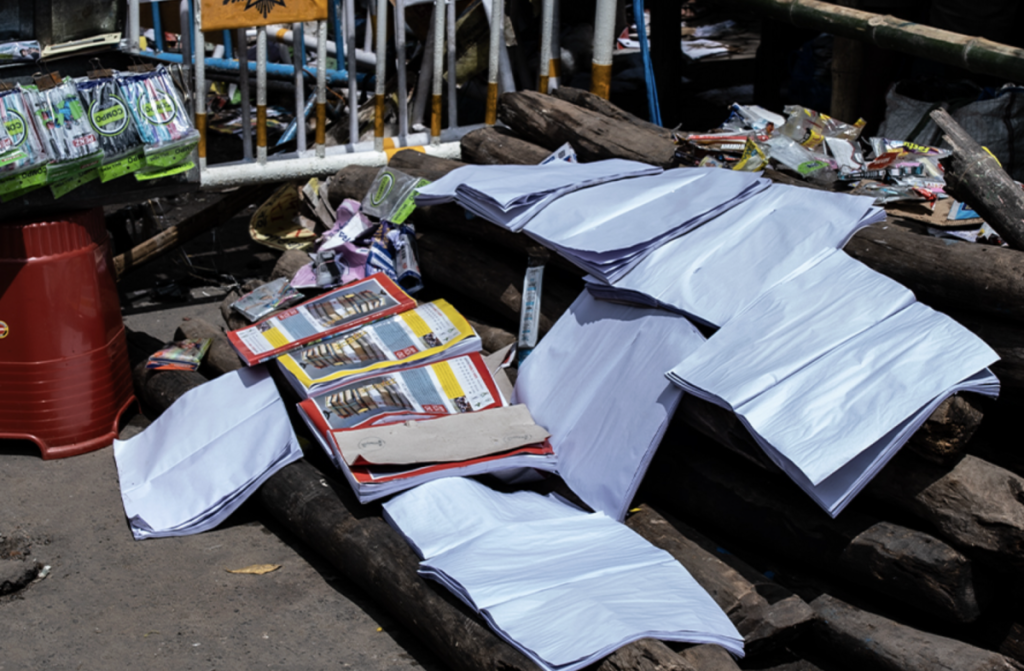
Presidency College (now University) is often hailed as the magnet of the Bengali Renaissance. The surrounding areas gradually formed a market for buying and selling books, and became formally known as College Street. The rise and evolution of Bengal’s middle class owes much to the emergence of these book quarters. Through years of a gradual loss of prestige, this 1.5-kilometre radius still provides livelihoods to thousands.
Not confined to its geographic bounds, the boi para has expanded its footprint, encompassing Surya Sen Street, Shyam Charan De Street, Bankim Chatterjee Street, Temar Lane, Kalutola, College Row, Bidhan Sarani, Ramanath Majumdar Street, Bhabani Dutta Lane, Sitaram Ghosh Street, Nabin Kundu Lane, Benetola, Naren Sen Square, and Shraddhananda Park. Thousands of small, medium, and large booksellers and publishers operate here.
This entire zone has been devastated by one night’s rain. What’s the exact scale of the damage? No one can quantify it yet. But all publishers agree: the total loss runs into several crores.
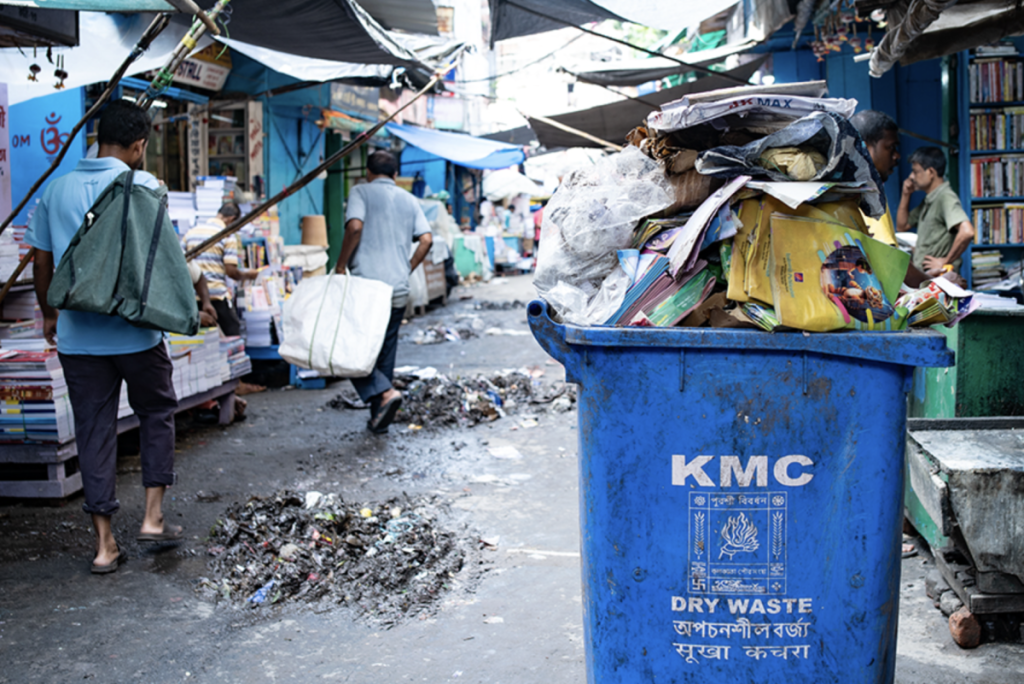
The extent of the destruction has veterans recalling 1978. One of the most senior publishers in College Street, Sudhangshu Shekhar Dey of Dey’s Publishing, then lived near Sealdah. “That year as well, the rain came at night. Amherst Street was flooded, and Thanthania would get waterlogged back then. We had to wade through to open the shop – the waters rose to just two steps below our store. But even in 78, we didn’t see this much damage. There weren’t as many shops then. Now there are thousands, so more are affected,” said Dey. In conversation, he revealed that their own losses amounted to at least Rs 8 lakh.
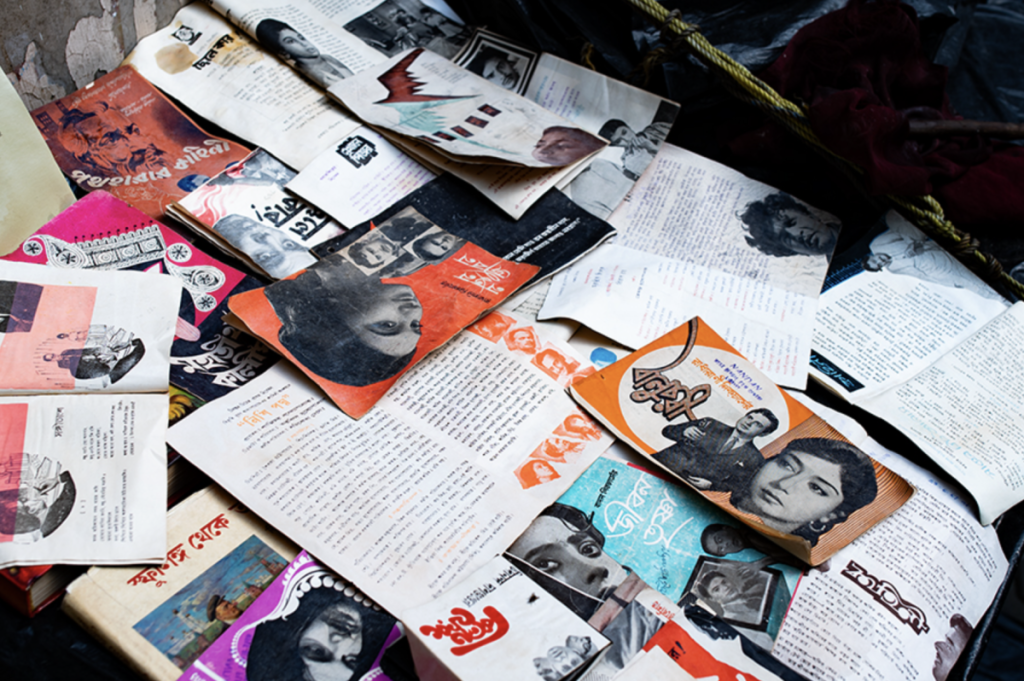
Tridib Chattopadhyay, director of Patra Bharati Publications and president of the Publishers and Booksellers Guild, also drew parallels to 1978. “That year was a nightmare for us. The disaster lasted three days. The whole city was in a flood-like situation. We had no water for three days. Boats had to be deployed in some areas. But this time it isn’t any easier. I’ve never seen so much standing water. We’ve lost Rs ten to twelve lakhs already.”
Maruf Hossain of Abhijan Publishers pegs his losses at similar numbers. “I’m estimating a loss of around Rs ten lakhs once the water recedes – books, computers, everything is ruined. It is not just our stock; many publishers consign books to us, and those are gone too. We built the shop three feet above street level, but even that didn’t save us,” Hossain said.
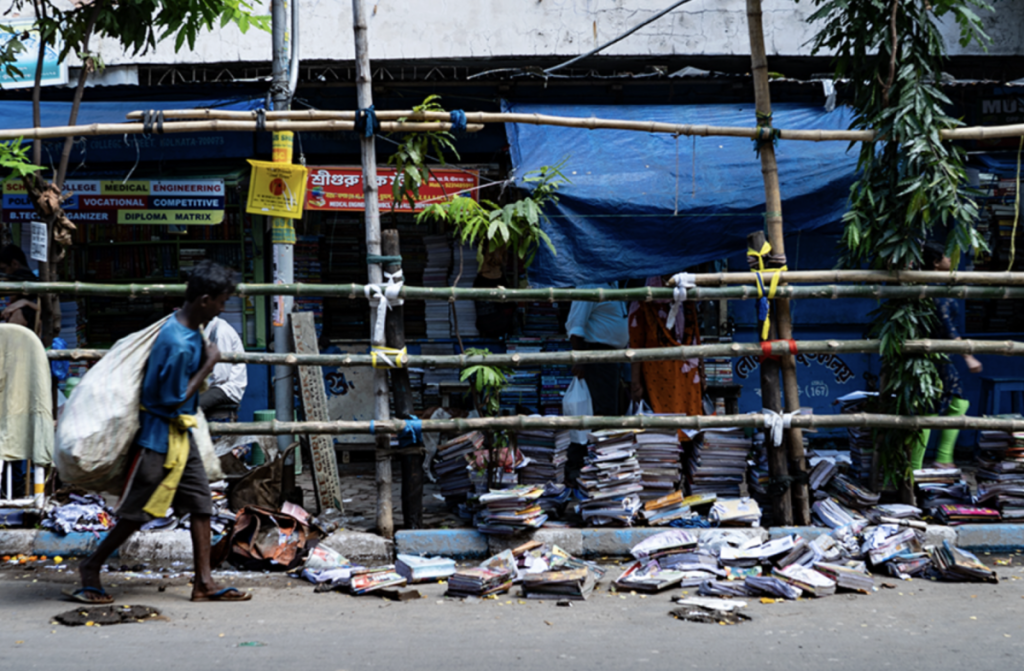
He squarely blamed uncleaned drainage canals for the severity. Furious, he added, “How much does the government earn from plastic firms? Is that sum so vast that it outweighs the sorrows of so many people, making them ignore our pleas?”
Sudhangshu Sekhar Dey, Tridib Chattopadhyay, and the relatively younger Hossain, all acknowledge substantial losses but note they have an edge: insurance coverage. They’ll recover some benefits. But what about those without insurance?
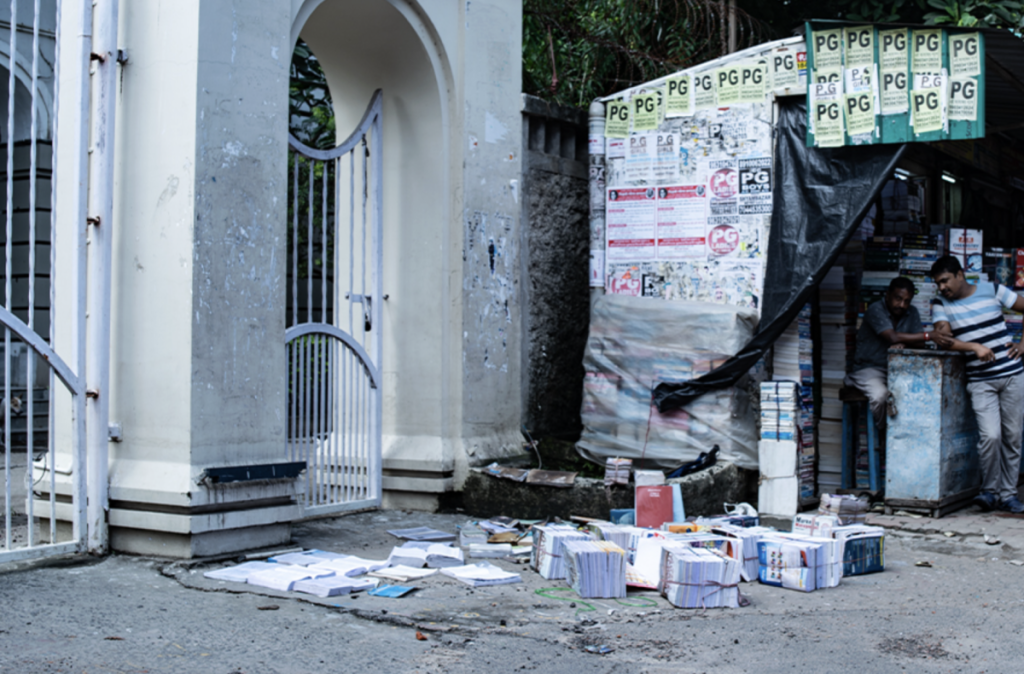
Hugging Calcutta University are over a hundred shops dealing in old books and textbooks. These are tiny spaces, with inventory crammed in the store or nearby godowns. Even in the afternoon on September 24, water was standing in them. Priceless books have been lost. Since COVID-19, these second-hand sellers had pioneered online promotion to boost earnings.
Turn right from the Calcutta University into Kalutola Lane, and you’ll find Dipankar Dutta’s shop, a treasure trove of rare books and magazines. Well-known on Facebook for sourcing rarities for readers, his valuable stock has been waterlogged. Dutta said, “We had damage during Amphan, but we knew the storm was coming and prepared accordingly. This time, we couldn’t imagine such rain. I arrived at College Street the next day, it was waist-deep water. Half my books are destroyed. Parcels for the post office are mud-soaked; unsellable. I had Shuktara from 1968, and many other rare old magazines. At least Rs 30-35,000 is lost.”
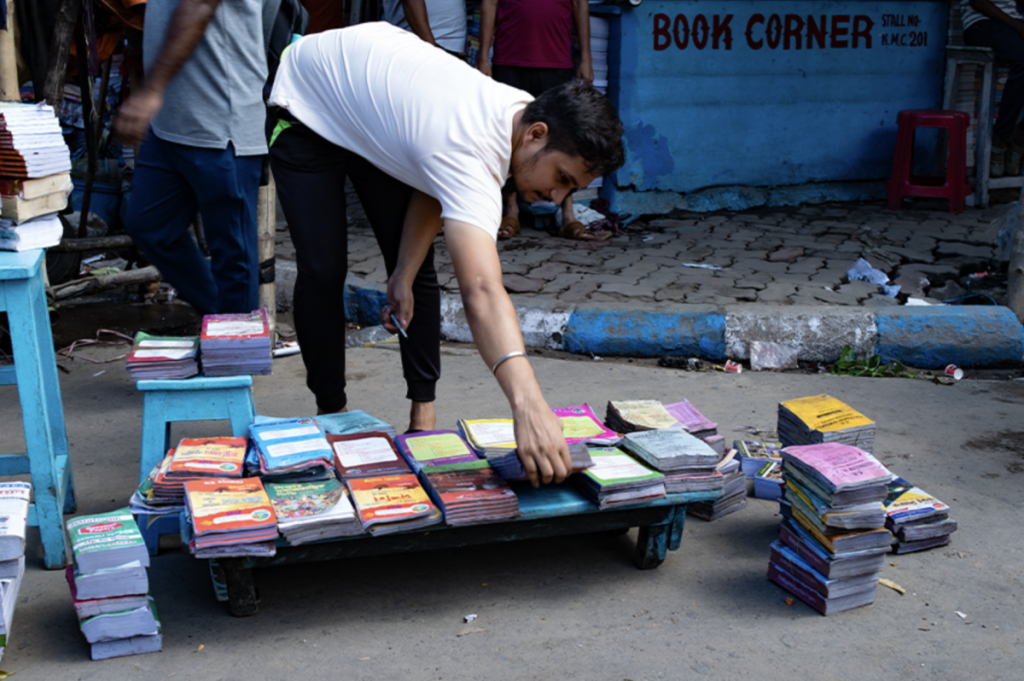
Another famous second-hand book seller Tuhin Saha added, “New books can be reprinted; losses recouped. But how do you replace rarities? I had the Bangabani magazine, a leaflet on widow remarriage. Those documents are gone, irreplaceable. The Satyajit Ray issue of Korak magazine – even the publishers don’t have copies – is lost. It was a research goldmine. Scholars won’t get these anymore. The generational loss is indescribable.”
Angry and despondent, Saha said that this is not the first time we are witnessing such devastation in College Street. “Everywhere, the same excuse: plastic pollution. If we complain too much, they’ll yank our plastic roofs off. Dogs seek shade in heat, but we bake in the sun. When books are ruined like this, our hearts shatter. Yet the administration couldn’t care less. In front, Puja pandal inaugurations [he points to the large College Square pandal], behind, a silent crematorium,” he said.
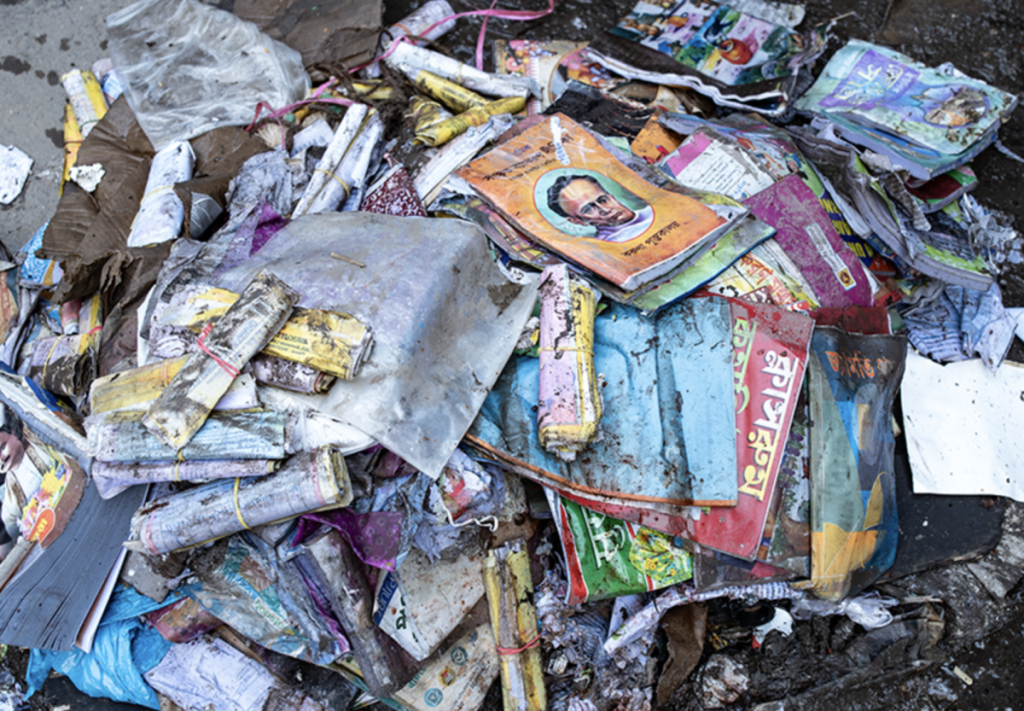
In recent years, several Pujo special supplements have regained popularity. Keeping that demand in mind, the small shop owners on Surya Sen Street bet big this season. Magazines like Devbhasha and Harappa sell out on arrival. It was happening this time too, until the heavy rain intervened. Madhabi Majumdar runs a small shop, Boibhashik, on Surya Sen Street. She said at least 30-35 magazines were soaked and ruined. “Will readers buy wet copies? If not, how do we settle with the publishers? We don’t know yet,” she said.
Small publishers and shopowners said that they understand that there will not be any help. College Street sellers aren’t voters in the area, so local politicians won’t step in. Hope rests on readers’ goodwill and independent initiatives. The Kolkata Creative Publishers Welfare Association has already started soliciting donations. Five years ago, during Amphan, the ‘Beche uthuk boi para (let the literary neighbourhood live again)’ campaign began. It’s being revived now. One-time handouts might provide initial relief to publishers and sellers, but not a permanent fix.
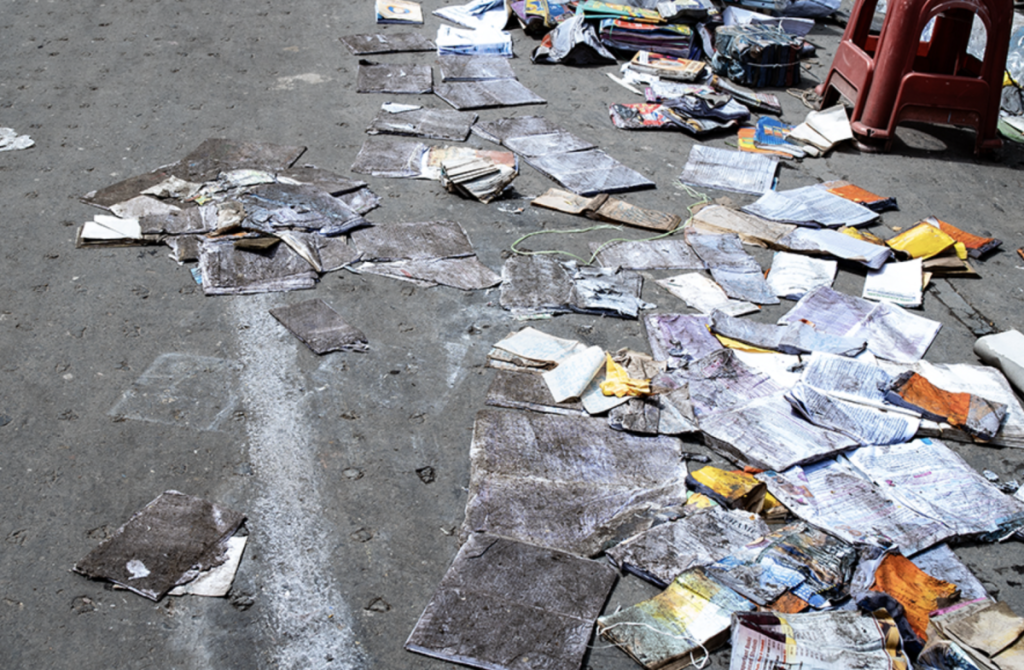
Sudhangshu Shekhar Dey said, “With this much rain, flooding is inevitable. It could happen again. In the Left government’s era, a College Street Market project had been started. It’s still incomplete. If work resumes and publishers and sellers are rehabilitated, that could be a solution.”
Everyone agrees that the government’s attention is needed to save the boi para. But 48 hours on, booksellers are yet to see local MLA Vivek Gupta. College Street suffers in silence.
Also Read: Tax Burden to Ease Further as India’s Economy Strengthens, Says PM Modi


